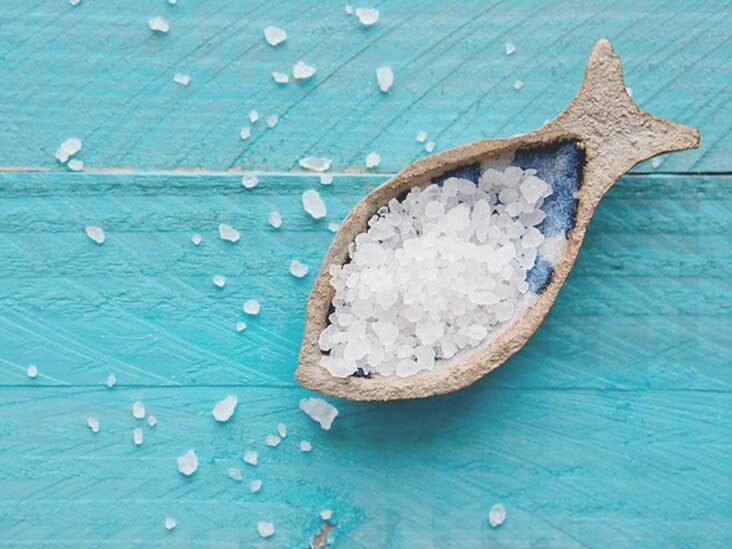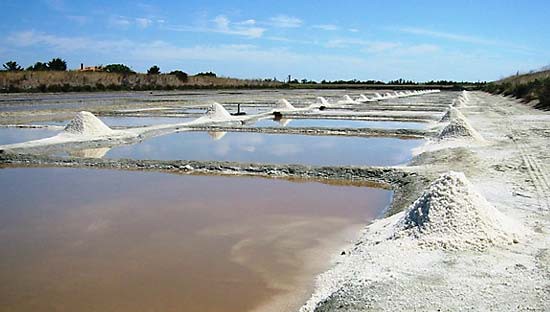How Ocean water is so salty ?
The ocean is made up of salt water, which is a combination of fresh water, plus minerals collectively called "salts." These salts aren't just sodium and chloride , but other minerals such as calcium, magnesium, and potassium, among others. These salts get into the ocean through several complex processes, including coming from rocks on land, volcanic eruptions, the wind and hydrothermal vents.

Rocks on land are the major source of salts dissolved in seawater. Rainwater that falls on land is slightly acidic, so it erodes rocks. This releases ions that are carried away to streams and rivers that eventually feed into the ocean. Many of the dissolved ions are used by organisms in the ocean and are removed from the water. Others are not removed, so their concentrations increase over time.
Another source of salts in the ocean is hydrothermal fluids, which come from vents in the seafloor. Ocean water seeps into cracks in the seafloor and is heated by magma from the Earth’s core. The heat causes a series of chemical reactions.
The water tends to lose oxygen, magnesium, and sulfates, and pick up metals such as iron, zinc, and copper from surrounding rocks. The heated water is released through vents in the seafloor, carrying the metals with it. Some ocean salts come from underwater volcanic eruptions, which directly release minerals into the ocean.
Salt domes also contribute to the ocean's saltiness. These domes, vast deposits of salt that form over geological timescales, are found underground and undersea around the world. They are common across the continental shelf of the northwestern Gulf of Mexico.

Two of the most prevalent ions in seawater are chloride and sodium. Together, they make up around 85 percent of all dissolved ions in the ocean. Magnesium and sulfate make up another 10 percent of the total. Other ions are found in very small concentrations.
The concentration of salt in seawater (salinity) varies with temperature, evaporation, and precipitation. Salinity is generally low at the equator and at the poles, and high at mid-latitudes. The average salinity is about 35 parts per thousand. Stated in another way, about 3.5 percent of the weight of seawater comes from the dissolved salts.
How we can test salinity of sea water ?
People often wonder how salty the ocean is, but what does this mean? What you are really asking is how much salt is dissolved in the water, called salinity. When something is dissolved in water it often seems to disappear. But even though the water may look clear the dissolved substance is still there. When something can dissolve in water we say that it is soluble. Salt happens to be very soluble in water compared to other substances, like sugar for example.
Different bodies of water contain different amounts of dissolved salts and have different salinities. The two main types of aquatic environments are freshwater habitats (lake, river, pond, stream) and salt water habitats (ocean, gulf, sea, bay). Another type of aquatic environment is called an estuary, which forms where a fresh body of water mixes together with a salty body of water. Estuaries are commonly found at the mouths of rivers and deltas, and act as a kind of nursery for the ocean.

How is salinity measured? The amount of salt dissolved in the water is often measured in parts per thousand (ppt) which is very similar to the grams of salt per liter of solution (g/L). That means if you have a 1 ppt salt solution, then if you filled up a 1 liter water bottle, it would have about 1 gram of salt inside. Seawater is usually somewhere between 30 and 35 ppt, which means that a 1 liter bottle of seawater would have 30–35 grams of salt inside!
In this experiment you will learn a simple way to measure the amount of salt in a sample of water by using evaporation. After the water of a solution evaporates, the dissolved salts are left behind. By collecting water samples from different bodies of water and evaporating them, you can find out how much salt there is in an ocean, lake, bay, or stream near your city.
Which Ocean is the Saltiest?
One might assume that the Pacific Ocean would contain the largest amount of salt content since it’s the largest ocean in the world.

However, this is not the case. Of the major oceans of the world, the second-largest Atlantic Ocean is actually the body of water with the highest salinity.
This is because some of the largest rivers in the world (such as the Amazon) flow into the Atlantic Ocean, carrying all kinds of runoff and other minerals that make the water content in the Atlantic so salty.
By contrast, the Pacific Ocean typically borders areas that receive more rainfall, which means more fresh water instead of saltwater.
For the same reason as the Atlantic, bodies of water like the Mediterranean Sea and the Dead Sea are also among some of the saltiest in the world, even though the latter two are both smaller in size.
We oserved how Ocean water is salty
As we’ve observed, the ocean major touch with the Earth’s surface. These large bodies of water contain incredible amounts of salt within them.
With the Atlantic Ocean having a higher concentration of salt than any of the other world oceans.
So the next time you find yourself near an ocean or body of saline water, remember do not drink it instead of freshwater .













